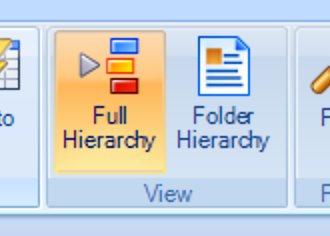001C CQRS: Alcohol-related risk Reduction searches

This folder has been retired from version 6.4 of folder 001.

The current version of CQRS: Alcohol-related risk Reduction searches is v2.0
The alcohol-related risk reduction scheme indicators are extracted automatically from your system approximately 10 days after the end of the 6 monthly reporting period. Practices have a short opportunity to check their data prior to extraction and maximise their income potential. For reviewing data in historic periods, the relative run date needs to be set as the final day of the achievement period (eg: 30th September or 31st March).

This article assumes the reader has access to CQRS, and can interpret the descriptions of payment indicators; only payment indicator codes are used below.
The main searches closely mirror the business rules to properly reflect the CQRS count, but each search is also based on a denominator (dependency) search designed by PCIT to include patients who may not be picked up by the extraction. These are similarly named, but with square brackets (eg: [ALCMI002] ). When reviewing the figures prior to CQRS extraction, Practices are looking for the searches to show 100%. When the search is not 100%, Practices can use the Check Patient feature to try to understand why a patient has been picked up in the denominator search but not for CQRS. There are several reasons why a patient may not be included in an indicator, and these all need to be considered.
- The wrong code was added. There are a number of legacy EMIS codes which do not count. We recommend using an up to date template to minimise the chances of this occurring.
- Patient was re-registered after the alcohol scoring was coded. Sometimes it is necessary to re-register a patient due to a failed transaction. Sometimes this can happen if details put in do not match those held on the spine, which can be minimised as a risk if a smartcard is inserted for all registration processes.
- The patient had a raised alcohol consumption score but no intervention coded. Patients who have an AUDIT score of 8 or more should have a form of intervention education offered (and coded), and anybody with a score of 20 or more should be referred for specialist support. The missed activity searches will pick up patients where the additional coding has been missed. There may be information in free text or it serves as a notification to ensure staff follow up on raised AUDIT scores in future.

Unlike most other CQRS search sets produced by Primary Care IT, the Alcohol-related risk reduction searches must be run with a relative run date of the final day of the reporting period (eg: 31st March).
The Alcohol-related Risk Reduction search folder contains an additional data quality report which should be reviewed first. ALCCC00 has been created to identify recently added codes for AUDIT-C / AUDIT / FAST which do not have a score (value) attached to them, since the score is critical to a patient's inclusion in the achievement indicator. The report can help identify the date of any relevant codes, but in any case it will be necessary to review the record to find and fix any data where the score had been added as associated text or even free text in a consultation.

Always check the 0% searches to ensure that single patients from the denominator are not missed!
The Full Hierarchy button on the ribbon can make checking the parent searches of 0% searches easier.

Review the CQRS article for points to consider when using these searches.
The business rules and code cluster lists for enhanced services can be found on the NHS Digital website.

While the main searches have been built to closely mirror the business rules, there is a creative element to the denominator searches. Where the main search isn't 100%, don't discount that there are other factors which erroneously brought the patient into the denominator search. PCIT is always happy to hear about problems, but is unable to assist with every query why a specific patient is/isn't included.
Related Articles
001 CQRS searches
CQRS extracts data from the clinical system to support payment and management of various Enhanced Services. The automation of these monthly reports saved Practices having to construct their own searches, which did not always accurately reflect the ...001I CQRS: Men ACWY searches
The current version of CQRS: Meningococcal ACWY vaccination is v5 The meningococcal ACWY service indicator is extracted automatically from your system approximately 10 days after the end of the monthly reporting period. Practices have a short ...001K CQRS: PCV HIB MenC programme searches
The current version of CQRS: PCV HIB MenC is v5.0 The PCV HIB MenC programme service indicators are extracted automatically from your system approximately 10 days after the end of the monthly reporting period. Practices have a short opportunity to ...016 Seasonal Influenza searches
The latest version is 016 Seasonal Influenza 2025-26 (v6.2.1) This collection of searches has been designed to support Practices running a call/recall programme for their seasonal influenza campaign. Built in line with the Enhanced Service criteria, ...001J CQRS: MMR searches
The current version of CQRS: MMR vaccination programme is v5.0 The MMR vaccination programme service indicators are extracted automatically from your system approximately 10 days after the end of the monthly reporting period. Practices have a short ...